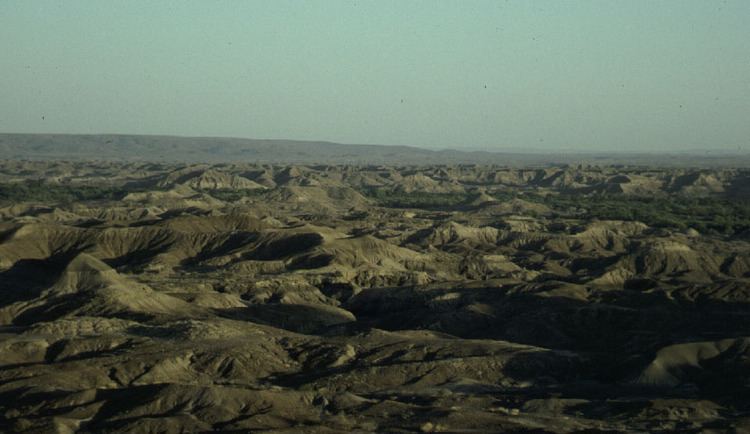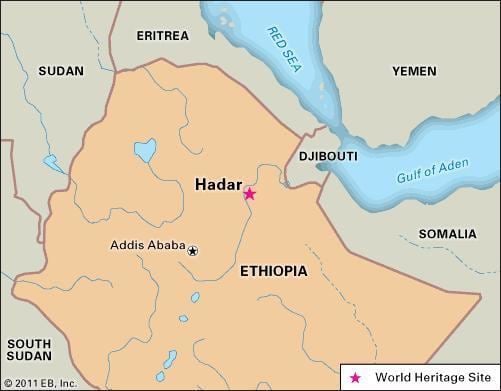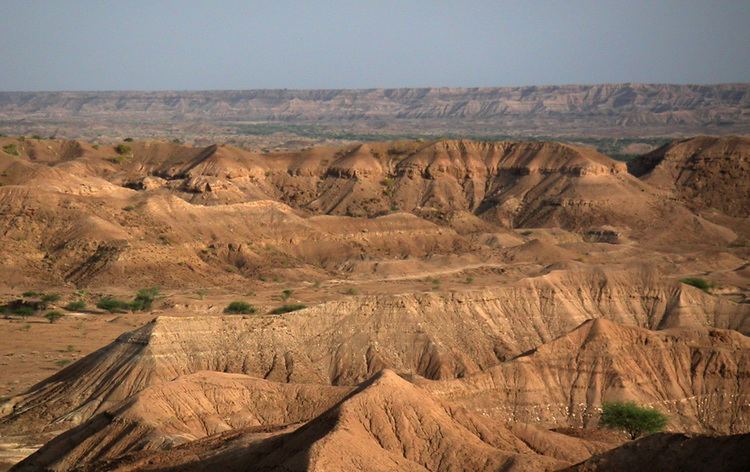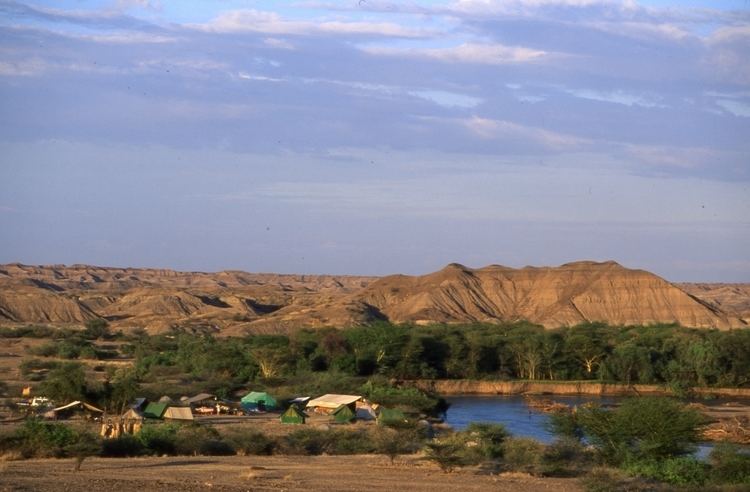 | ||
Hadar (also spelled Adda Da'ar; Afar "treaty [ahdi] stream [d'ar]") is a village in Ethiopia, on the southern edge of the Afar Triangle. The village is known for the nearby archaeological digs which have yielded some well-known hominin fossils.
Contents

According to Jon Kalb, early maps show caravan routes passing within 10 or 15 kilometers of Hadar but not through it. The British explorer L.M. Nesbitt passed 15 kilometres west of Hadar in 1928.

Dig it scene 1 hadar ethiopia so long ago
Government

Hadar is located in Mille woreda, which is part of the Administrative Zone 1 of the Afar Region. The Central Statistical Agency has not published an estimate for its 2005 population.

On 4 February 2007, the Afar Regional Cabinet approved the creation of a new woreda, taken from the western part of Mille woreda, with its administrative center to be at Hadar.
Archeological findings and sitings

The first paleo-geological explorations of the Hadar area were by Maurice Taieb. He found Hadar in December 1970 by following the Ledi River, which originates in the highlands north of Bati to empty into the Awash River. Taieb recovered a number of fossils in the area, and led a party back to Hadar May 1972. In October 1973 the International Afar Research Expedition with 16 people arrived at Hadar and encamped for two months, during which time the first hominin fossil was found. (Taeib claims in his 1985 book Sur la terre des premiers hommes to have discovered the Hadar fields in 1968; but Kalb argues that this claim of an earlier find is incorrect.) The IARE party examined a series of sedimentary layers which they named the Hadar Formation, and which they dated from late Pliocene to early Pleistocene times, or, 3.5 to 2.3 million years ago.

A member of the 1973 expedition to Hadar, the archeologist Donald Johanson, returned to Hadar the next year and discovered the fossil hominin Lucy, a 3.2 million-year-old fossilized specimen of Australopithecus afarensis. (The name 'Lucy' was inspired by the song "Lucy in the Sky with Diamonds", by The Beatles, which happened to be playing on the radio at base camp.) About thirty years later in nearby Dikika, a fossil skeleton of another Australopithecus afarensis was found in a separate outcrop of the Hadar Formation across the Awash River from Hadar. The skeleton is of a three-year-old girl later named "Selam", which means peace in several Ethiopian languages.

